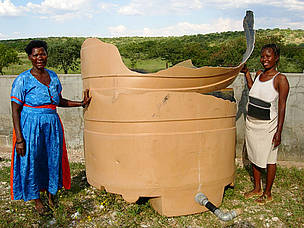The WWF is run at a local level by the following offices...
Still poached for ivory
Despite a ban on the international trade in ivory, African elephants are still being poached in large numbers. Tens of thousands of elephants are being killed every year for their ivory tusks. The ivory is often carved into ornaments and jewellery – China is the biggest consumer market for such products.
The ban on international trade was introduced in 1989 by CITES (Convention on International Trade in Endangered Species of Wild Fauna and Flora) after years of unprecedented poaching. In the 1980s, an estimated 100,000 elephants were being killed per year and up to 80% of herds were lost in some regions.
The ban allowed some populations to recover, especially where elephants were adequately protected.
But there has been an upsurge in poaching and illegal ivory trafficking in recent years, driven by increasing demand in Asia, which has led to steep declines in forest elephant numbers and some savannah elephant populations.
Insufficient anti-poaching capacity, weak law enforcement and corruption undermine efforts to stop the poaching and trafficking in some countries.
The ban on international trade was introduced in 1989 by CITES (Convention on International Trade in Endangered Species of Wild Fauna and Flora) after years of unprecedented poaching. In the 1980s, an estimated 100,000 elephants were being killed per year and up to 80% of herds were lost in some regions.
The ban allowed some populations to recover, especially where elephants were adequately protected.
But there has been an upsurge in poaching and illegal ivory trafficking in recent years, driven by increasing demand in Asia, which has led to steep declines in forest elephant numbers and some savannah elephant populations.
Insufficient anti-poaching capacity, weak law enforcement and corruption undermine efforts to stop the poaching and trafficking in some countries.

Forest elephant killed by poachers for tusks, Dzanga-Ndoki National Park, Central African Republic .

© WWF/CFP
Habitat loss and conflict with communities
Most elephant habitat still extends outside protected areas, and the rapid growth of human populations and the extension of agriculture into rangelands and forests formerly considered unsuitable for farming mean that elephant habitat is continuing to be lost.Increasing conflict with people
As human populations expand, more land is being converted to agriculture. So elephant habitat is shrinking and becoming more fragmented, and people and elephants are increasingly coming into contact - and conflict - with each other.
Elephants sometimes raid farmers’ fields and damage their crops – affecting the farmers’ livelihoods – and may even kill people. Elephants are sometimes killed in retaliation.
With human populations continuing to grow across their range, habitat loss and degradation - and conflict with communities - will remain major threats to elephants' survival.

© Martin Harvey / WWF

© Jo Benn / WWF

© Give the gift of dung and save elephants and people from each other in Africa! © iStockphoto.com/Hansjoerg Richter
Buy a gift of chili, dung and engine oil to help people and elephants in Africa!
